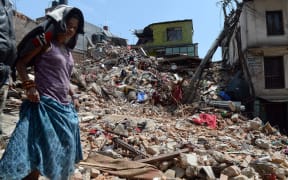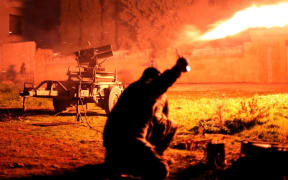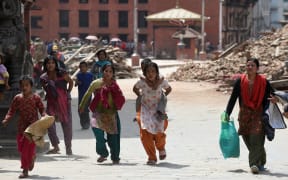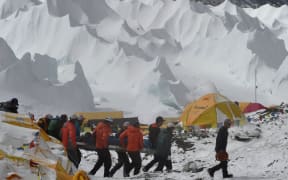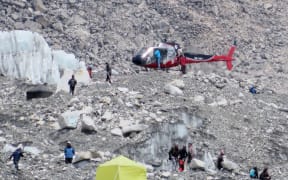Eight million people have been affected by the massive earthquake in Nepal - more than a quarter of the country's population - the United Nations says.
A drone flight over Kathmandu revealed the scope of the destruction.
International aid has started arriving but there is still huge need - 1.4 million require food aid, the UN said.
The 7.8-magnitude quake hit Nepal on Saturday destroying buildings in Kathmandu and severely affecting rural areas across the region.
The death toll has risen to 4,310, with almost 8,000 injured, officials have said, but prime minister Sushil Koirala said it could reach 10,000.
It it does reach that figure it would be even higher than the 8,500 killed in a massive 1934 quake, the Himalayan nation's worst disaster to date.
Mr Koirala ordered intensified rescue efforts and has appealed for foreign supplies of tents and medicines.
He said the government was doing all it could for rescue and relief on a war footing.
Nepal and surrounding areas continued to experience aftershocks. Thousands in Kathmandu, Nepal's capital, spent a third night outside, too afraid to go back into their houses.
Water, food and electricity are in short supply and there are fears of outbreaks of disease.
"According to initial estimations and based on the latest earthquake intensity mapping, eight million people in 39 districts have been affected, of which over two million people live in the 11 severely affected districts," said the most recent report from the UN Office of the Resident Co-ordinator.
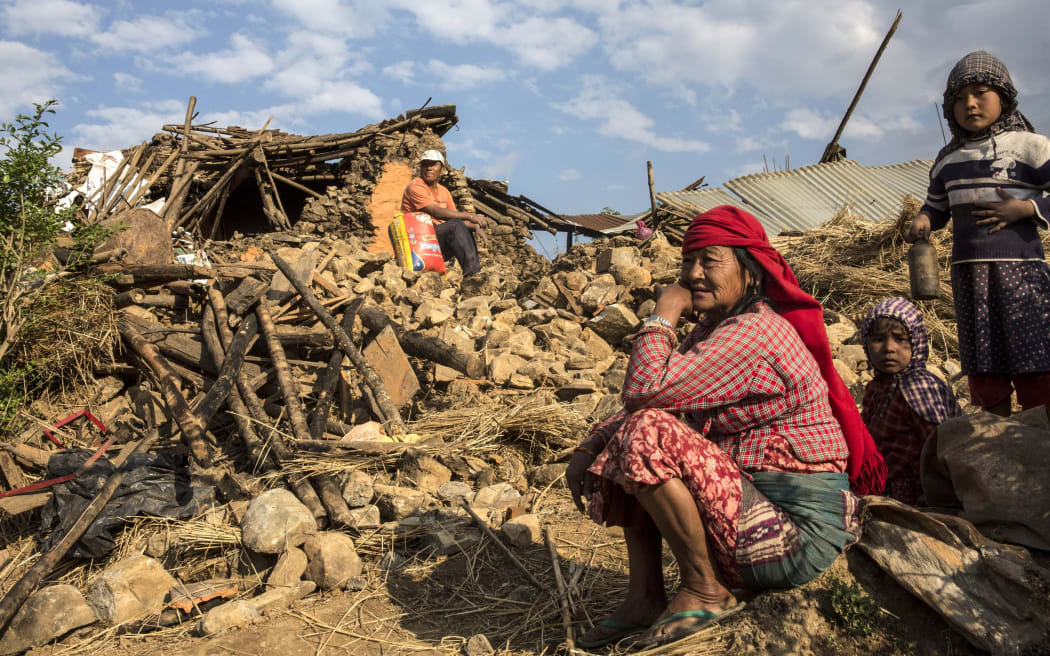
Photo: AFP
International rescue teams with sniffer dogs are racing to find survivors buried in the rubble. Teams equipped with heavy cutting gear and relief supplies are landing round the clock at the country's only international airport, on the outskirts of Kathmandu.
Meanwhile, an army spokesman told the Associated Press news agency that 90 percent of the country's 100,000 troops were taking part in the quake effort.
The Nepalese government's Chief Secretary Lila Mani Poudyal said his country was short of medical teams and relief materials, including "tents, dry goods, blankets, mattresses and 80 different medicines".
"We don't have the helicopters that we need or the expertise to rescue the people trapped," he said. The need for doctors would grow as more survivors were pulled from the rubble, Mr Poudyal added.
Tens of thousands of Nepalese are huddling in vast tent cities, and the UN World Food Programme says shelter and medical equipment is the first priority. "This will be a ... massive operation," spokesperson Elisabeth Byrs told AFP.

Aerial images show a campsite in the Chuchepati area of the Kathmandu Valley. Photo: AFP / Citizenside / Thomas Dutour
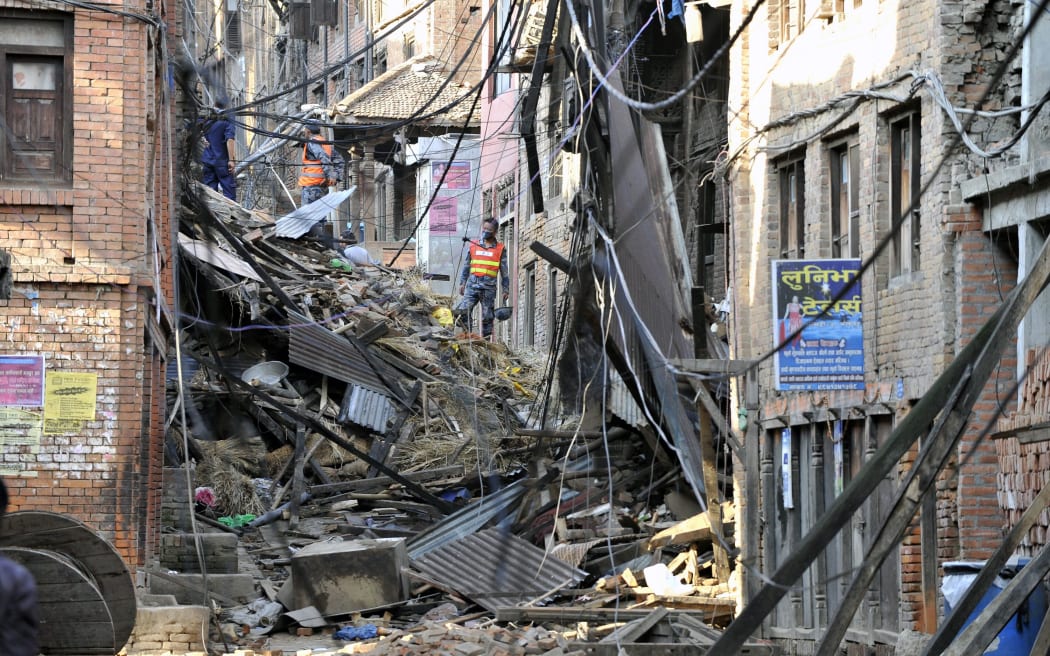
Damaged buildings in Bhaktapur, on the outskirts of Kathmandu. Photo: AFP
The World Health Organization had already distributed medical supplies to cover the health needs of more than 40,000 people for three months in the country.
But with food also expected to quickly run scarce, the UN agency has mobilised all available food stocks in the region, along with nearly 20,000 plastic sheets and some 8000 solar lamps.
Officials are scrambling to get aid from the country's only international airport to the tens of thousands left destitute.
While the international aid effort is gathering pace, Kathmandu's Tribhuvan airport has been hobbled by crowds trying to leave the country, severe aftershocks that have forced it to close several times since the main 7.8 quake, and many staff unable to make it to work.
At least 200 climbers were rescued from Mount Everest, after the earthquake triggered avalanches, killing 18 people.
Authorities estimated up to a 1000 climbers were on the mountain when the quake hit. On the north side alone, 400 climbers from more than 20 countries are reported to have descended to safety.
UN experts have also been poring over satellite images of the shattered country to see which parts have been worst hit.
Aid workers say almost no help has reached villages near the epicentre of the earthquake, where entire communities are said to have been destroyed.
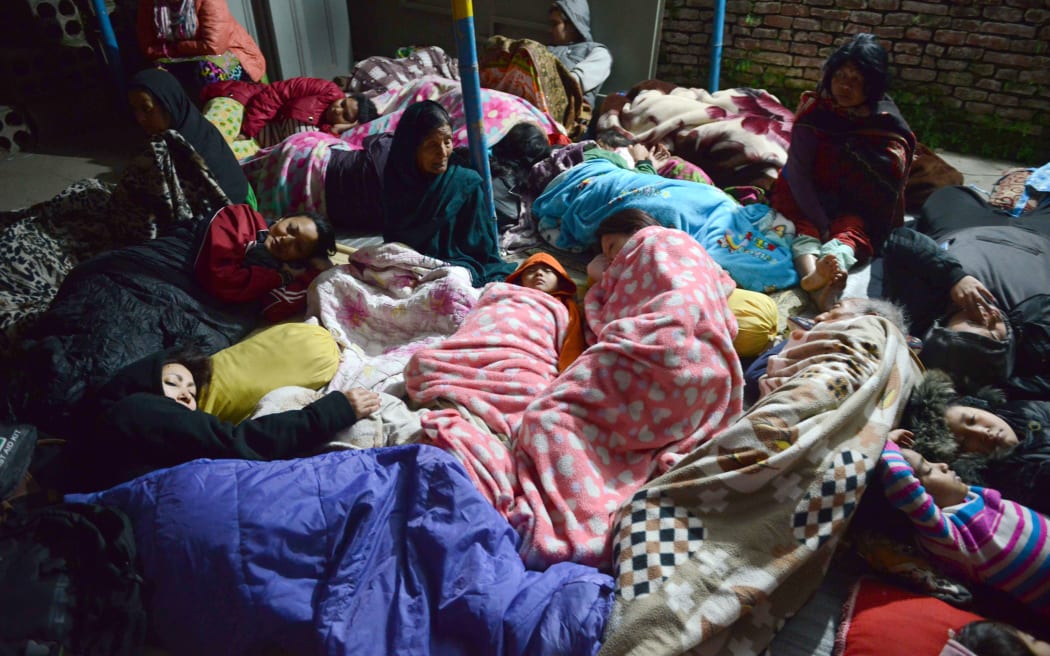
Kathmandu residents sleep in the open. Photo: AFP
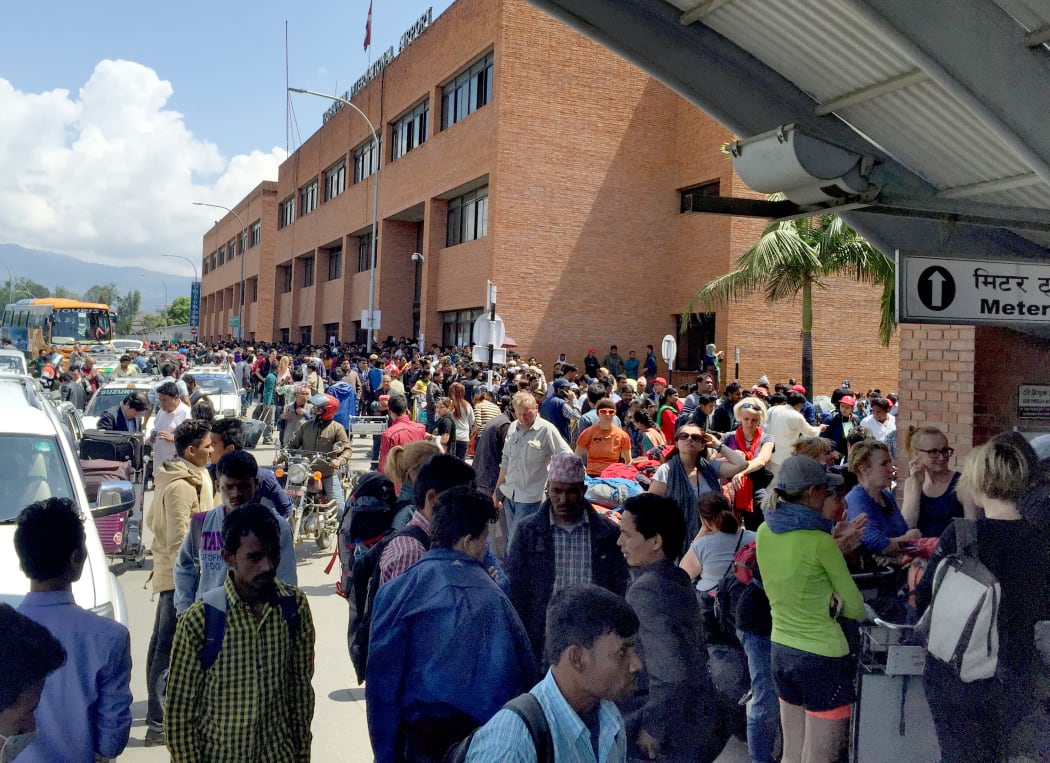
Tourists crowd Kathmandu airport waiting for a flight out. Photo: AFP / Axel Hager / DPA
- AFP / Reuters / BBC
